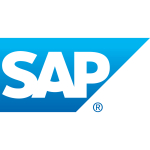What is our primary use case?
Usually, we use it as a test environment and to quickly develop the proof of concept for various projects. So, it's mainly for quick deployment and testing.
It's deployed on the cloud and on-premises.
How has it helped my organization?
The biggest benefit is the speed. When developing a new PoC, if we don't have a container-based environment, we would have to set up virtual machines. We would have to install different software to make sure that there are secure ways to do that, which would most likely need a couple of days, whereas, with a container-based platform, such as Kubernetes or OpenShift, we can do that in a matter of minutes or hours.
The security throughout the stack and the software supply chain is very good. It's a step-by-step procedure to obtain new software. It's very secure. We cannot have access without a safe, provisioned way. For troubleshooting a fault, I like the new oc debug feature where you spin up a new pod for debugging. You can spin up a new test pod for a complete copy of the problematic one. We are very happy with it security-wise. I would rate it a nine out of ten in terms of security features for running business-critical applications. That's only because I never give a ten.
It provides us with the flexibility and efficiency of cloud-native stacks while enabling us to meet regulatory constraints. We can automate these checks. For example, in the hybrid cloud model, we can check for different things, such as the accessibility of many different classes not only in the cloud but also on-premises. We can use the hybrid view to check many things very quickly. If someone comes into the company from a regulatory body whose job is to run a couple of scripts and check if certain rules apply to all servers, without having this kind of interface, we would have to give him a week to be able to connect to everything and check everything one by one, and of course, we would have to pay him for that. With OpenShift, from one panel, we can automatically run a script across several different servers or even connect manually to each of them, which is a big benefit. It saves a lot of time and money.
It can speed up the development time. There's only Jenkins, but I'm not so sure about that. Because the development and testing phases are sped up, the time to market can also be very good. However, it also depends on other factors, such as any back-and-forth changes, because we can have a lot of feedback. Overall, there is about a 10% improvement in the time to market.
The CodeReady Workspaces reduce project onboarding time. There is about a 20% reduction.
What is most valuable?
Its security is most valuable. It's by default secure, which is very important.
It's very easy to manage deployment across different environments. It doesn't matter if it's a private or a hybrid cloud. It's very well-suited for the type of work that we do, which is the deployment for our PoCs. It's very easy to start with small ideas and then gradually scale up.
It's very easy to integrate with different systems and products, which is another plus point.
It also has a very nice user interface. It's very self-explanatory, and that saves a lot of time from training new users. You can cut a lot of time to quickly familiarize yourself with the base.
OperatorHub is another big plus. It's very easy to use and very useful.
What needs improvement?
One thing that can be improved but is surely difficult to improve is the cost. We have a lot of customers who would prefer a Vanilla Kubernetes solution or another solution that combines Kubernetes with some cloud provider, especially if they are already using a specific cloud provider. When we try to work with them, some customers complain about it.
Another thing is that the installation and setup process is a little bit complex, but I must admit that it has improved a lot as compared to the older version.
Autoscaling is a very unique feature, but it could be useful to have more options based on traffic statistics, for example, via Prometheus. So, there should be more ready solutions to autoscale based on specific applications.
For how long have I used the solution?
I've been using this solution for about one and a half years.
What do I think about the stability of the solution?
It's a very stable solution. Usually, problems occur when there's an application error or someone does something wrong and there is a human factor. For example, once there was an application creating a lot of automatic snapshots. There were volumes of snapshots, which couldn't be deleted easily. So, occasionally, there may be some bugs, but generally, it's very stable.
What do I think about the scalability of the solution?
Scalability is a big plus. There is scalability from nodes to machines and so on. However, I would prefer more options on scalability based on statistics. That would be very interesting and very nice to see in the future.
Currently, we have less than 100 users who use this solution. They are mostly developers. There are also some end-users, assessors, architects, administrators, and project managers. The end-user experience is quite self-explanatory, and it's very important.
How are customer service and support?
Once I'm able to talk to a technician, the support is very good. They are very knowledgeable and polite. I'm very impressed, and I've only good things to say about their technical support even though there's a lot of bureaucracy until you reach the right department, which can take some time, but I understand that. All big organizations have a bit of a challenge. I would rate them an eight out of ten.
As a partner for helping us create the platform that we need, I would rate Red Hat a nine out of ten. They're helpful. Whenever I'm in contact with the technical team, they're knowledgeable and helpful.
How would you rate customer service and support?
Which solution did I use previously and why did I switch?
I'm not sure because I wasn't involved in the installation.
We never considered building our own container platform. I've only seen customers using Vanilla Kubernetes because OpenShift is a little bit expensive, and some specific organizations have chosen to invest in a strong team because they would need a strong team to build Vanilla Kubernetes. They are succeeding in maintaining that way of working. I have seen this a couple of times.
How was the initial setup?
I wasn't involved in its initial setup, but I talked to a lot of the people who were involved. Compared to a simple or Vanilla Kubernetes, it requires lots more work and has a lot of default processes constantly running, but, in my opinion, it's something where OpenShift is getting better and better. It's getting quicker. It's going in the right direction.
The deployment took a few days.
What was our ROI?
I believe there is an ROI for organizations where security is very important, and because of privacy requirements, the public cloud cannot be an option. Especially in the banking sector, there's almost no competition. There is about 15% ROI.
What's my experience with pricing, setup cost, and licensing?
It's expensive. It may be cheaper to invest in building Vanilla Kubernetes, especially if security is not the number one motivation or requirement. Of course, that's difficult, and in some business areas, such as banking, that's not something you can put as a second priority. In other situations, a Vanilla Kubernetes with a sufficiently strong team can be cheaper and almost as effective. In addition, people who are already working with a specific cloud provider tend to find cheaper solutions by combining Kubernetes on the specific cloud and choosing that over OpenShift.
What other advice do I have?
It's important to build a team around this. So, invest in getting the correct training. There are a lot of options that Red Hat provides. Start small, scale up gradually, and involve people from different areas. In addition to the infrastructure team, also involve someone from development and the architecture team to be able to see its value from different perspectives.
I would rate it a nine out of ten. I'm very happy with the interface, security, and support.
Disclosure: My company has a business relationship with this vendor other than being a customer. Partner




















